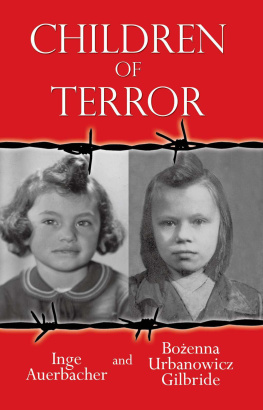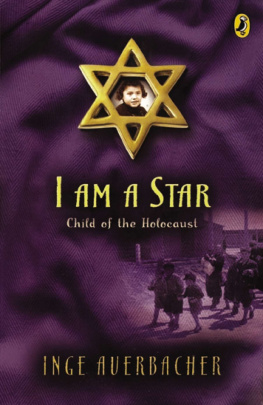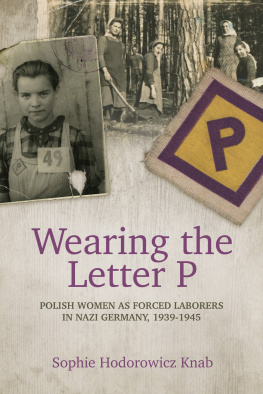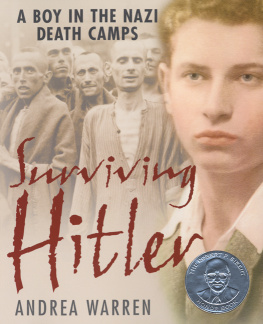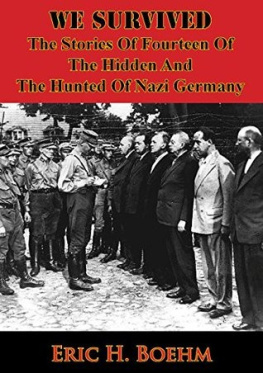Auerbacher Inge - Children of terror
Here you can read online Auerbacher Inge - Children of terror full text of the book (entire story) in english for free. Download pdf and epub, get meaning, cover and reviews about this ebook. City: New York, Poland, Germany, year: 2009, publisher: iUniverse, genre: Non-fiction. Description of the work, (preface) as well as reviews are available. Best literature library LitArk.com created for fans of good reading and offers a wide selection of genres:
Romance novel
Science fiction
Adventure
Detective
Science
History
Home and family
Prose
Art
Politics
Computer
Non-fiction
Religion
Business
Children
Humor
Choose a favorite category and find really read worthwhile books. Enjoy immersion in the world of imagination, feel the emotions of the characters or learn something new for yourself, make an fascinating discovery.
- Book:Children of terror
- Author:
- Publisher:iUniverse
- Genre:
- Year:2009
- City:New York, Poland, Germany
- Rating:4 / 5
- Favourites:Add to favourites
- Your mark:
Children of terror: summary, description and annotation
We offer to read an annotation, description, summary or preface (depends on what the author of the book "Children of terror" wrote himself). If you haven't found the necessary information about the book — write in the comments, we will try to find it.
War does not spare the innocent. Two young girls, one a Catholic from Poland, the other a Jew from Germany, were witnesses to the horror of the Nazi occupation and Hitlers terror in Germany. As children they saw their homes and communities destroyed and loved ones killed. They survived deportation, labor camps, concentration camps, starvation, disease and isolation.
This is a moving personal account of history. Urbanowicz and Auerbachers painful pasts and similar experiences should guide us to make correct decisions for the future.
Aldona Wos, M.D.
Ambassador of the United States of America, Retired, to the Republic of Estonia
Daughter of Paul Wos, Flossenburg
Concentration Camp, Prisoner
Number 23504
Most Holocaust survivors are no longer with us, and that is why this volume is so important. It is a moving testimony by two courageous women, one Catholic and one Jewish, about their youthful ordeals at the hands of the Nazis. They succeed in ways even the most astute historian cannot - they literally capture history and bring it to life. It is sure to touch all those who read it.
William A. Donohue
President, Catholic League for Religious and Civil Rights
Such an original book, written jointly by both a Jewish survivor and a Polish-Christian survivor of the Holocaust, Children of Terror points the way toward fresh insight, hope and redemption. If Never again is to be more than a slogan, tomorrows adults must be nourished and informed by books such as this. A fabulous piece of work, perfect for the young people who are our future.
Rabbi Dr. Hirsch Joseph Simckes, St. Johns University, Department of Theology
The authors were born in the same year but into different worlds: one a Polish Catholic and the other a German Jew. Despite their dramatically different traditions and circumstances, they shared a common trauma - the confusion and fear of being a child in wartime. Auerbacher and Urbanowicz vividly describe the saving power of family, place, and tradition. Young readers of Children of Terror will come away with a deeper understanding of the Second World War and a profound admiration for the books authors.
David G. Marwell, Ph.D., Director of the Museum of Jewish Heritage - A Living Memorial to the Holocaust
Auerbacher Inge: author's other books
Who wrote Children of terror? Find out the surname, the name of the author of the book and a list of all author's works by series.

